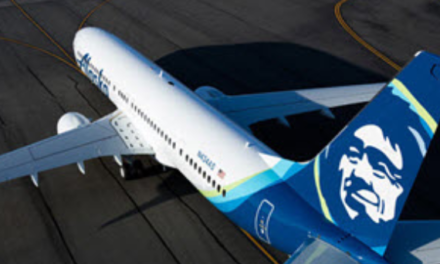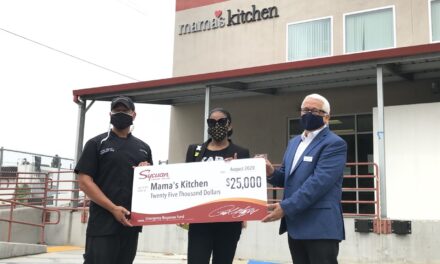By Danny R. Johnson – Entertainment/Travel News Editor

SAN JUAN, PUERTO RICO – It has been a year and a half after Hurricane Maria, and San Diego County News visited the island over the Presidents Day holiday and found signs of hope and progress are emerging in Puerto Rico, just as the island’s tourist season is booming again.
The United States citizens of this proud and independent minded unincorporated United States territory still has much work to be done, and some of the rural outlying areas might not see infrastructures rebuilt and economic recovery for years to come; however, the capital of San Juan has seen a significant increase in international visitors traffic for months. With a few exceptions, shops, hotels and restaurants are operating as usual, and there are some noteworthy additions to the city’s lively dining scene.
The cultural landscape is energetic and diverse as well: Lin-Manuel Miranda made headlines with his reprisal of the lead role in the musical “Hamilton,” which played at San Juan’s main performing arts center in January 2019, and galleries in Old San Juan are showcasing thought-provoking works by local artists. As always, you’ll find superb Five-Star hotels such as the Marriott AC Hotel San Juan Condado, Marriott San Juan Stellaris Casino Resort, Sheraton San Juan, and the Hilton Plaza Resort, picturesque beaches, superior hand-crafted cocktails, infectious music and expressive locals, all of them more eager than ever to welcome visitors to their sunny corner of the Caribbean.

Marriott AC Hotel San Juan Condado
The Marriott AC Hotel San Juan Condado is one of the newest luxury hotels and served as the anchor for our Puerto Rico Caribbean excursion and it is located in the heart of San Juan’s bustling entertainment and cultural district. The hotel houses excellent restaurants: the AC Lounge is a contemporary eatery specializes in tasty tapas and handcrafted cocktails to create the perfect end to any evening; the AC Kitchen is a European-inspired eatery invites you to begin your days in San Juan satisfied thanks to an impressive breakfast buffet. In the afternoon, take a break from Condado Beach to treat yourself to international tapas inspired by the local area; Sobao is an authentic Spanish bakery specializing in Puerto Rican coffees, sandwiches and confectionary food. Judging from the hundreds of locals and visitors who frequents the bakery every day, obvious this is a popular venue for locals to get together and talk of the news of the day.
I had one such brief conversation with Juan Martinez, a 25 year-old artist who co-owns an art store in Old San Juan and frequents the bakery every morning — says life is improving on the island.
“Since Maria hit the island the people of Puerto Rico had to regroup and help each other because it was obvious government services were either inadequate or non-existent,” stated Juan. As we talked we ate over a San Juan beloved pastry called “mallorca,” a doughy sweet bun shaped like a spiral. It derives from a Spanish specialty called “ensaimada,” originally from the Balearic Islands. The Puerto Rican version is a testament to Spain’s strong influence on the local cuisine (Puerto Rico was a Spanish colony from the early 1500s until the late 1800s), but mostly it’s an ode to indulgence.

Juan emphasized the importance of the people to “band together in political harmony in unison against the Federal government in Washington, DC who are determined to short change the people’s recovery.” As we ended our conversation and washed down the delicious meal with a small cup of Spanish coffee “Macchiato,” which is similar to the Cuban coffee found in Havana, we parted ways.
Since we were talking about coffee, Puerto Rican coffee farmers, who had been doing a brisk business as a result of the global obsession with flat whites and cold brews, lost about 80 percent of their crops in the aftermath of Hurricane Maria. But thanks to a group of agricultural entrepreneurs and activists, the industry is poised to get back on its feet. Head to up-and-coming Loiza Street to sample a blend from selected local farms at Café con Cé, a tiny cafe with interiors featuring deliberately tattered walls and Scandinavian furniture. On weekends, they have brunch items like French toast and omelets. Hacienda San Pedro Coffee Shop, on nearby Avenida de Diego, sells espressos and lattes made with beans from an award-winning farm in the mountains of central Puerto Rico. Sandwiches are also on the menu.
Another landmark restaurant located in the AC Hotel is the La Bodeguita de Manolo, which creates some of the most original and savoring Spanish influenced cuisines in San Juan! The restaurant is located in such an obscure location inside the Sobao Bakery, you can easily miss it. But once you get inside the sophisticated and chic restaurant you are in for a treat. The venue only holds 30 diners at a time and has an impressive little bar area whose bartender is very talented in creating hand crafted mojitos and other tropical cocktails.
San Juan Marriott Stellaris Resort and Casino
Music can make or break a night out, but it can sometimes be a rarity to find bars which take its importance seriously. Places which host live bands are often hard to find, but they usually play vital parts in the local community and the area’s cultural scene. You can’t go wrong when visiting the San Juan Marriott Stellaris Resort and Casino, one of the preeminent venues with live salsa music. Sip on your drink and get ready to have a good time. Every Friday and Saturday nights the hotel hosts one of the island’s hottest live salsa bands you’ll find anywhere.
Old San Juan

Old San Juan is one of the most charming and culturally significant colonial districts in the New World, filled with colorful old houses and cobblestone streets. After taking in the views from the Castillo San Felipe del Morro, a 16th-century fortress perched on a seaside bluff, take the short walk to the frequently overlooked Museo de las Américas, a small museum on the second floor of a military barracks from 1854. It offers an overview of the region’s history, as well as temporary exhibitions by noteworthy Puerto Rican artists such as José R. Alicea, a printmaker and painter. Just steps away is the Liga de Arte, an art school with shows by emerging and established artists. Its interior garden, shaded by various tropical trees, is a lovely spot to take a break.
San Juan, Puerto Rico—Puerto Rico se levanta. It’s become something of an official motto among officials on the island, draped across buildings and making its way into press releases and speeches. It captures an optimistic and hopeful feeling, one a world away from mainland America’s posture toward the island, which vacillates between indifference and sensationalism. The best English translation is probably “Puerto Rico is rising,” but a few others might do as well. Puerto Rico rises. Puerto Rico raises itself. Puerto Rico is waking up.
One area in which the Puerto Rican people are waking up to is the area of flexing its muscles in the political arena.
In a recent interview last week with CBS News, Puerto Rico Gov. Ricardo Rosselló believes Democratic candidates vying to challenge President Trump in the 2020 presidential election need to make issues affecting the island and its approximately 3.2 million U.S. citizens central to their campaigns.
Rosselló believes news coverage of Puerto Ricans’ plight post-María can generate political momentum to solve the island’s perpetual struggle over questions of self-determination, which dates back to the late 19th century when the U.S. acquired the territory after the Spanish-American War.
Rosselló said it is “bizarre” that more than 3 million American citizens can’t vote for president because of where they live.
“Any of these citizens, should they move to the states, would be able to vote anyway,” he added. “Any U.S. citizen that would move to Puerto Rico would lose those rights.”
Puerto Rican communities in the mainland, however, can help change this, he added.
Although Puerto Ricans living on the island can only vote in party primaries and not the general election, Rosselló said the large and growing Puerto Rican diaspora in the mainland is becoming an important voting bloc and can have some sway in national elections, particularly in battleground states like Florida
“If we get organized and have a clear platform, we will be a force to be reckoned with in national politics,” he said. “And this will greatly affect the island in a positive way because we will finally receive the benefits, resources and services any U.S. citizen would expect from its government.”



